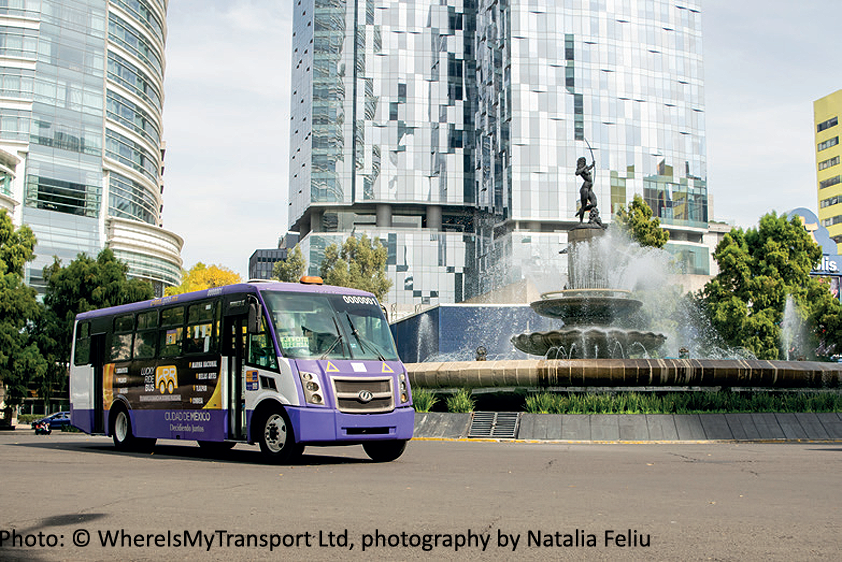
Moving with data
For many, making the daily commute without real-time mobility data is now unthinkable. Drivers tap into traffic data to avoid jams. Public transport users check their phones to see the bus coming in real time.
What’s less appreciated is how data on our comings-and-goings is essential for more than just journeys. Infrastructure planning firms, research organizations, and banks use cutting-edge data sources to improve cities. For investors, mobility data plays a role as a useful indicator of economic trends.
More widely, all businesses benefit from understanding how their customers move, and where they travel every day. But what’s even better, especially for freight and logistics companies, is finding their next opportunity. Innovative mapping and data-gathering technology reveals previously unseen patterns in people’s movements, particularly in emerging markets. This information is helping firms make better decisions on where to invest.
Mobility data reveals untapped opportunities
At the highest level, mobility data tells us where people are going and when. But it can also tell us where people want to go, but can’t, as well as where people move that is lacking investment. In other words, where is there a mismatch between what cities offer and what citizens want? Opportunities can be found in those gaps.
Infrastructure planning firms, research organizations, and banks form part of the tapestry of organizations that help make 12and implement urban planning decisions. Traditionally, they have relied on point-in-time measurements such as traffic counts or public-transport ridership estimates to inform their policy advice.
These older tools are of limited use to investors looking at market trends, or looking for new opportunities to build out real estate and infrastructure along transport thoroughfares.
Innovation brings new data sources
We can now do much better. Start with GPS tracking from mobile phones, which allows for low-cost tracking from door-to-door.
Throughout the Covid-19 pandemic, Google and Apple have provided summary mobility reports that have helped inform policy – as well as investors. Economics research firms now view information on people’s movements as an integral source of ‘alternative data’ that they gather and sell to hedge funds and other investors.
Other firms have worked to generate policy recommendations from much more granular GPS data than is publicly available. INRIX, a transport data firm, used mobile phone data to understand walking, biking, and driving trips to pedestrianized streets during the Covid-19 pandemic.
The results help inform what types of street reforms attract people. That’s useful for city governments, but also for companies looking to invest in the next prospering area.
Improved survey technology also allows consulting and planning firms to collect statistically significant samples of public transport origin-destination data – telling us not just which bus lines are heavily used, but where the passengers actually want to go.
When financing transport infrastructure investments, banks can now account for the entire mobility landscape. The World Bank contracted my firm, WhereIsMyTransport, to provide comprehensive public transport network data for seven African cities. The Bank used this data to inform its investment evaluations for bus, rail, and other urban planning considerations across the continent.
In each of these cities, the effort was the first time that the organization had benefited from a central source of comprehensive and reliable public transport network data, including the informal, privately run routes that make up the vast majority of the network. In emerging-market cities, 85 percent or more of public transport services are informal.
Ten years ago, collecting data on informal transport would have been impossible (or at least prohibitively expensive). Now, with purpose-built data-gathering software, it’s scalable to every city in the world.
Mapping opportunities
For investors and businesses, mobility data offers a window into previously unknown worlds. Particularly with newly available datasets in emerging economies, we now have comprehensive information on how people move in the world’s largest, fastest-growing cities.
This has big implications for supply chains and urban infrastructure. In many of the world’s biggest cities, we simply do not know how people move around or where they go. Supply chains are hyperlocal by necessity, since shops and wholesalers need on-the-ground information to respond to demand.
That is no longer the case. With city-level datasets, even the largest businesses can play on equal footing, knowing where their customers go each day, how they get to work, and which shopping centers they stop at on the way.
Even more importantly, these datasets reveal places that millions of consumers pass each day, but where there are insufficient services or untapped business opportunities. With over two billion people relying on public transport in emerging-market cities, those gaps make up a mammoth opportunity.
Devin de Vries is the CEO and co-founder of WhereIsMyTransport – a mobility technology company that develops products to improve the public transport experience in emerging-market megacities, and delivers data services that inform industry leading clients. He leads a team inspired by a shared vision to bring technological innovations to public transport users in the Majority World.
www.whereismytransport.com